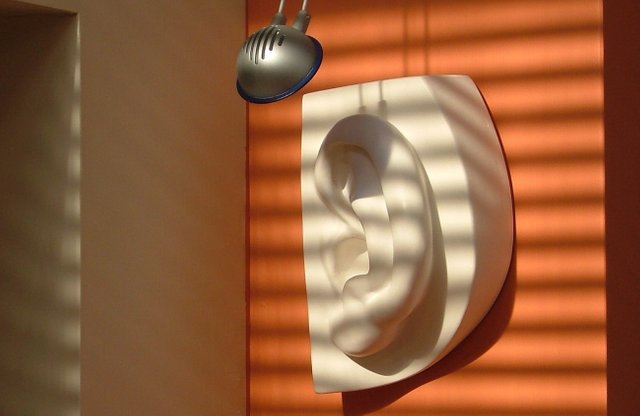A group of researchers from MIT has introduced a new method of transmitting directional sound using a laser. Under the cut, we tell what this technology is built on.
Laser for sound transmission
A directional sound technology capable of generating an audio stream that is heard in a small region of space has been known since the 1980s. However, the sound from such systems (including modern ones) can hardly be called narrowly targeted: on average, it extends to an area with a diameter of 50 centimeters. The large size of the coverage area limits their use.
Today they are used to create "audio points" in museums - so that visitors can listen to lectures of electronic guides and not interfere with others - but are not suitable for broadcasting an audio stream to a specific person at a great distance.
This problem was solved by engineers from MIT. They suggested using a laser beam for transmitting directional sound. Their solution is based on the photoacoustic effect , when water vapor in the atmosphere absorbs the energy of light. This process leads to a local increase in air pressure and the occurrence of sound vibrations. A person is able to perceive these vibrations without additional wearable equipment.
How it works
As a radiation source, engineers from MIT used a Tulium laser , which is commonly used in medicine and cosmetology. The device is capable of generating radiation with a wavelength from 1900 to 2000 nm - the near infrared range of the electromagnetic spectrum. The decision to use a tulium laser is due to the fact that water vapor in the air best absorbs the waves of this particular length. Another reason - light with a wavelength of 1900 nm is harmless to the retina and human skin.
The developers have proposed two ways to transmit sound. The first method involves an acousto-optic modulator - a device that changes the intensity of transmitted light. It consists of a glass plate on which, using a piezoelectric transducer, creates a traveling ultrasonic wave that changes the intensity of the beam. The advantage of this approach was the rather high quality of the transmitted sound - the researchers were able to successfully reproduce speech recording and even music.
In the second method of transmitting audio information, a rotating mirror is used instead of a modulator. It moves the laser point in space near the listener at the speed of sound, which leads to the interference of acoustic signals and their amplification.
In this case, the sound quality is worse than in the first method. However, the sound itself turns out to be much louder - the authors managed to reach a value of 60 dB at a distance of 2.5 meters (in the first case, the maximum was 30 dB).
So far, developers have failed to create a system that would combine the merits - the volume and sound quality - of both approaches. But they will continue to work in this direction. Engineers plan to develop a method based on a rotating mirror. The decision is connected with the fact that in the first case it is possible to “make up louder” the sound only at the expense of a more powerful laser, and it will already be dangerous for humans.
Other Directional Sound Transmission Techniques
The idea of using a laser to transmit sound over a distance is not new. A similar technology was proposed at the US Department of Defense. They used two optical devices: a femtosecond laser, which creates a plasma ball in the air, and a nanolaser tuned to a narrow range of wavelengths and generating sound vibrations in this ball.
As a result, an unpleasant noise is heard in the air, similar to the sound of a siren. The device is planned to be used to protect secret objects from outsiders.
Microwaves are also used to transmit directional sound. A few years ago, a group of researchers from the University of Illinois in Chicago was studying the possibility of transmitting an audio signal using an MRI machine, using human cranial bones as a “carrier” of sound vibrations. The engineers were able to transmit clearly distinguishable acoustic clicks, but they could not reproduce any complex audio recordings. The sound waves were not powerful enough for this.
Ultrasound is another way to play audio in a small area of space. Last year, Noveto introduced an acoustic speaker, which has 3D sensors that track the position of the listener's head. Then she calculates in which direction and angle from which it is necessary to send ultrasonic waves in order to create the feeling of “virtual headphones” in the listener.
Perspective sound direction
Today, directional sound is mainly used in exhibitions or in advertising. However, it is expected that in the future it will become a more effective marketing tool. For example, Noveto speakers are planning to use it with a face recognition system to send targeted advertisements to passers-by on the street.
With the new methods of sound transmission, there will be other areas of their application. For example, the solution of engineers from MIT is proposed to be used in personal warning systems for people about dangers, since the laser is capable of transmitting sound over very long distances.
